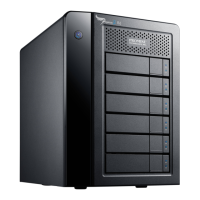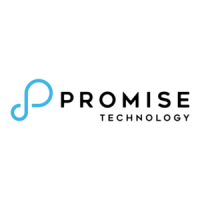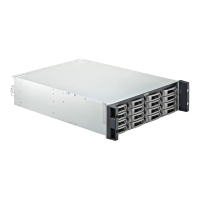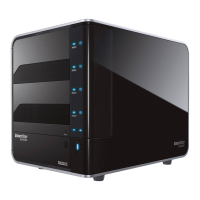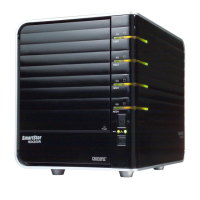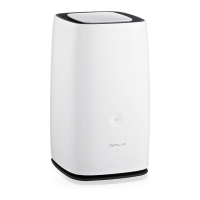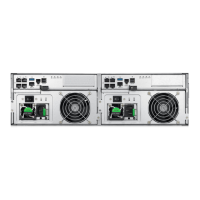212
Promise Technology
Pegasus32 R4/R6/R8
A RAID 5 on Pegasus R4 consists of three or four physical drives. A RAID 5 on Pegasus R6 consists of
three to six physical drives.
RecommendedApplicationsforRAID5:
• File and Application servers
• WWW, E-mail, and News servers
• Intranet servers
RAID 6 – Block and Double Parity Stripe
RAID level 6 stores dual parity data is rotated across the physical drives along with the block data. A
RAID 6 logical drive can continue to accept I/O requests when any two physical drives fail.
Figure 5. RAID 6 stripes all drives with data and dual parity
Hence, a RAID 6 logical drive with (7) 100 GB physical drives has a capacity of 500 GB. A RAID 6
logical drive with (4) 100 GB physical drives has a capacity of 200 GB.
RAID6becomesmorecapacityefcientintermsofphysicaldrivesasthenumberofphysicaldrives
increases.
RAID 6 provides double fault tolerance. Your logical drive remains available when up to two physical
drives fail.
RAID 6 is generally considered to be the safest RAID level. A RAID 6 on Pegasus R4 consists of four
physical drives.
Advantages Disadvantages
• High Read data transaction rate
• Medium Write data transaction rate
• Good aggregate transfer rate
• Most versatile RAID level
• Disk failure has a medium impact on
throughput
Double Distributed (Wide-space Q+Q) Parity
Physical Drives
Data
Blocks
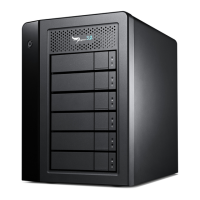
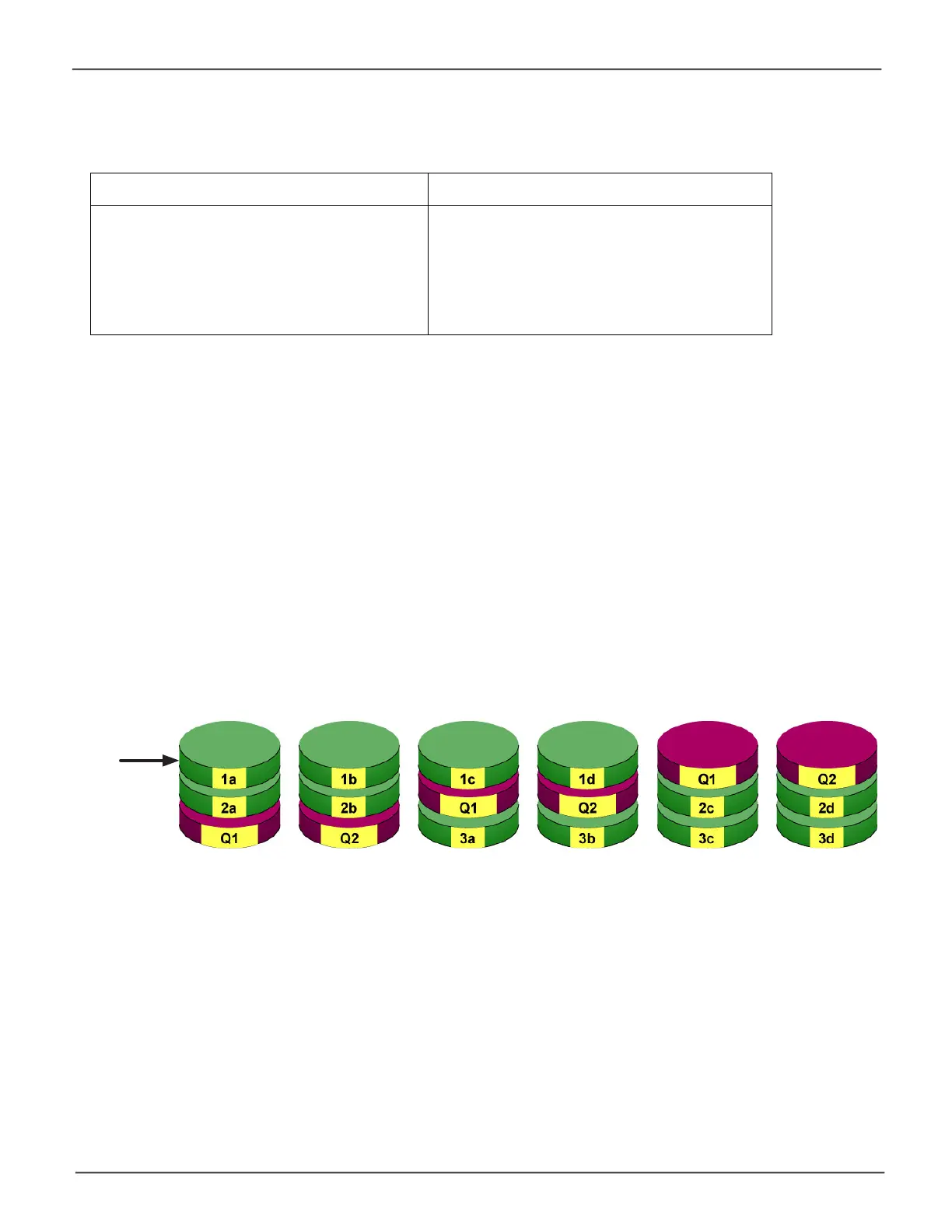